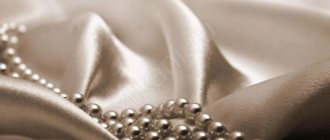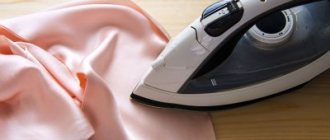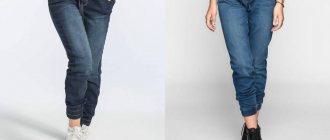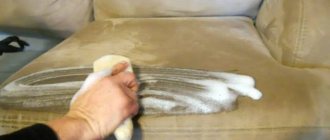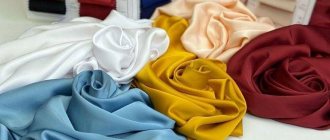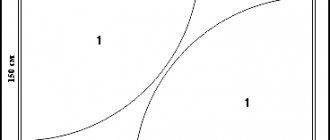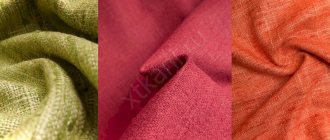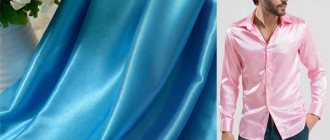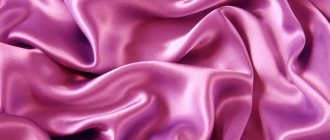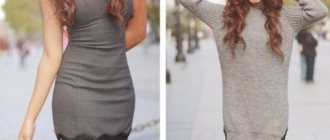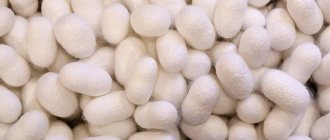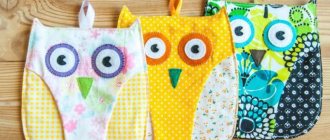Home / Silk fabrics
Back
Published: 12/07/2020
Reading time: 2 min
0
109
Damascus is the capital of Syria, kind of the largest city of the Arab Republic. It has been famous for its artistic crafts for many millennia.
A Damascus saber, decorated with paintings and precious stones, is a sign of strength and power. The sharp cutting weapon was easily divided on the fly by a silk scarf made of no less famous ancient damask fabric.
Deep historical roots do not prevent oriental textiles from remaining relevant. In the interior of modern houses, damask ornament looks glamorous and beautiful. Curtains, bedspreads, upholstered furniture, decorative pillows made of damask fabric fit perfectly into any style.
- 1 History of the appearance of fabric
- 2 Description of fabric
- 3 Properties
- 4 Varieties
- 5 Application
- 6 Subtleties of caring for things made of Damascus
- 7 Conclusion
History of the appearance of fabric
There is speculation that trade caravans along the Silk Road from China to Europe carried the original fabric through the thriving trading center of Damascus. From here, enterprising merchants resold it to Byzantium, and later to Europe. Therefore, it began to be called by the name of the Syrian city - Damascus.
The tradition of decorating walls with patterned fabric dates back to ancient times. For centuries, silk damask, along with brocade, was considered a highly valued commodity. Only kings and high clergy used it for clothing and home decoration.
Since the 15th century, weavers in Italy and France have mastered skilled craftsmanship. Aristocrats began to use damask for the interiors of palaces - on curtains, walls, and upholstery.
The Museum of Madrid houses the Duke of Alba's table set, which includes 250 napkins, 3 large tablecloths and 6 small ones - a magnificent damask creation.
Until now, tailors from the Vatican buy expensive damask material in Syrian stores to sew the festive vestments of the church hierarchy.
Damascus - what kind of fabric is it, description
More detailed mentions of Damascus in history came in the 15th century, when the material began to be brought to Europe. It was made in the Syrian city of Damascus, and in European countries it was used for furniture upholstery. Find out about the types of velvet fabrics here.
The main characteristics of the canvas include the following:
- The fabric was very expensive because it was handmade and completely natural.
- It was distinguished by increased strength because it had extremely complex weaving.
- It took the master a lot of physical effort and time to create a small canvas.
- The canvas had a special relief that was tactile and looked very elegant.
For a long time, the secret of creation remained a secret. Syrian craftsmen refused to tell how weaving occurs and what is needed for it. As a result, it was not possible to mass produce the material, but it was in great demand. This material will tell you about the unusual fine linen fabric.
After several centuries, Damascus changed in appearance. The fabric began to imitate lace applied to silk or cotton bases. It was used for decorative purposes, namely, to decorate bed linen.
What are they made from?
Production has always been complex and time-consuming. Only in modern times did modern jacquard machines begin to be used for creation. As for the basis for creating the panel, a variety of materials were used for this purpose:
- cotton and silk;
- wool;
- laziness;
- mixed and synthetic threads.
The uniqueness of the finished fabric lies precisely in its complex weaving. It is not easy to apply a unique satin pattern to a canvas base, which will be ideally repeated on the reverse side.
Texture and density: what it looks like, what it’s like
Designers and ordinary people strongly associate jacquard fabric with luxury. Despite the fact that the material comes from Syria, the name also has a French translation - “damage with golden flowers.”
Such a spectacular name appeared due to a special ornament. Usually the masters chose an image of flora. The characteristic plant theme allows you to fully convey the oriental flavor and seems to transport you to the Sultan’s chambers. This article will tell you about the description of fuqra fabric.
In texture, it is very similar to classic brocade - durable, embossed, but in softness and silkiness - like silk. Visually, it resembles an atlas, since the drawings are brilliant and very beautiful.
Damask silk is still considered one of the most popular materials in the world. A spectacular and very unusual option for decoration symbolizes luxury and emphasizes the status of the owner of such a thing.
Properties and quality of the material
In addition to the properties already described, which are determined by tactile contact, there are several characteristics that allow the canvas to be used in designer decoration. We are talking about the following properties:
- the fabric is very dense and durable;
- serves its intended purpose for a long time and is highly wear-resistant;
- holds its shape well and allows you to create volume, so it is often used for draperies;
- does not stretch or shrink;
- does not fade in direct sunlight, and retains its original appearance for many years.
In general, damask can be characterized as a durable, versatile fabric used in various fields and industries. Read about the description of etro fabric for furniture here.
Varieties
Producing the fabric, with its hand-woven satin pattern repeated on the reverse side, was difficult and time-consuming.
Later in Europe they mastered machine weaving technology. Mass production of the material began, which was called jacquard damask in honor of the designer of the machine. The basis is now based on different materials: silk, cotton, linen, wool, synthetic fibers.
Many species with different properties appeared, and they began to be used for specific purposes:
Author:
Anastasia Kukushkina
I hope you enjoy the article I have prepared for you! If you find errors in it, write to me about it! I will answer any questions you have, ask them!
